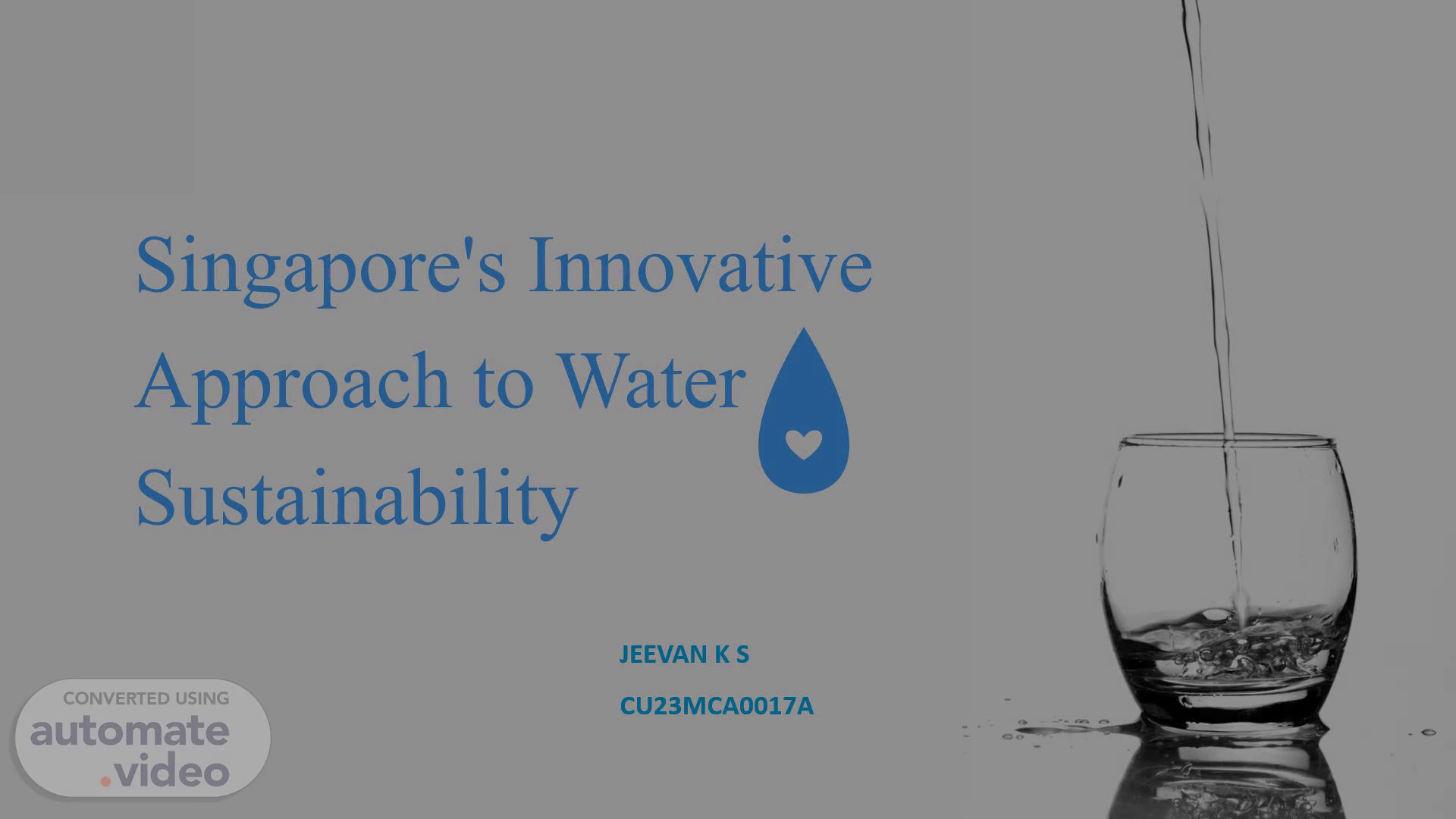
Modern White and Blue Water Drive Church Presentation
Scene 1 (0s)
[Audio] Hello everyone I'm jeevan KS from M-C-A-. today im presenting the case study of Singapore's Innovative Approach to Water Sustainability..
Scene 2 (9s)
[Audio] Singapore's Water Scarcity Challenge The Singapore has long grappled with water scarcity due to its small size and lack of natural freshwater resources With limited land to collect and store rainwater Singapore relies heavily on imported water from Malaysia to meet its needs. However disputes over water have strained the countries' relationship..
Scene 3 (31s)
[Audio] In this slide we are going to discuss how Singapore overcomes the water scarcity challenge. Through a combination of rainwater harvesting used water purification and seawater desalination Singapore has achieved a high degree of water sustainability and security. Its innovative and diversified approach to water management serves as a model for cities facing water scarcity challenges worldwide. With strategic long-term planning Singapore overcame its vulnerability to limited freshwater resources and ensured access to clean water for generations to come..
Scene 4 (1m 7s)
[Audio] The strategy they used to overcome the challenge is PUB's Four National Taps Strategy. Singapore established the Public Utilities Board in 2001 to spearhead their water sustainability efforts. P-U-B developed an innovative Four National Taps strategy to ensure Singapore has a robust diversified and sustainable supply of water. The four national taps strategy is Water from Local Catchment Areas Imported Water newater Desalinated Water. Water from Local Catchment Areas: Singapore maximizes the collection of rainwater through an extensive network of rivers canals and drains that capture rainwater and channel it to 17 reservoirs across the island. P-U-B has also implemented initiatives to expand catchment areas. Today two-thirds of Singapore's land is considered water catchment. Imported Water: Singapore imports water from Malaysia through a long-term water agreement. While relying on imported water addresses short-term needs PUB aims to reduce Singapore's dependence on imported water. newater: With the advancement of technology PUB developed the capability to turn wastewater into high-grade reclaimed water called newater. newater has passed rigorous tests by health experts and exceeds World Health Organization standards. It is mainly used for industrial and commercial purposes. Desalinated Water: PUB launched Singapore's first desalination plant in 2005 and the second in 2013 to convert seawater into fresh drinking water through reverse osmosis. Desalinated water has boosted Singapore's water security and self-sufficiency. Singapore plans to expand desalination capacity to meet up to 30% of future water demand..
Scene 5 (2m 56s)
[Audio] The S-D-G goals aligned with this case study is SDG 6: Clean Water and Sanitation. SDG 9: Industry Innovation and Infrastructure. SDG 11: Sustainable Cities and Communities. SDG 14: Life Below Water. Thank You..